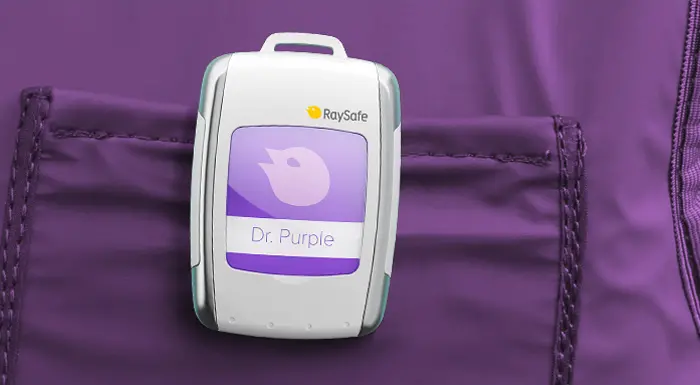Real-time Dosimetry Works
For years, medical professionals who work with radiation have depended on passive shielding and protective garments for protection against scattered radiation. However, just like the X-Ray equipment has become more and more sophisticated, personal protection has advanced.
As described in a previous post, real-time dosimetry visualizes personal exposure levels in real-time. Thereby the effect of radiation protection measures – or lack thereof – will be visualized. For example, the screen below shows that Ms. Ranger (at the top of the screen) is exposed to high levels of radiation. Based on this information she may decide to take action, such as using a movable lead screen, which would lower her reading to somewhere in the green or yellow range. Thus, real time feedback empowers medical staff to learn, improve and take ownership of their personal radiation exposure.
So does it work? Here’s what radiation safety officers have discovered after using RaySafe i3:
Lawrence General Hospital, Lawrence, MA, USA Read the white paper
Collected dose per person and procedure over 2 x 8 months, pre/post implementation of RaySafe real-time dosimetry. Recorded dose reduction by staff group: • Physicians: 65,8 ± 33,6% (p=0,01) • Nurses: 43,1 ± 16,7% (p=0,04) • Technologists: 45,0 ± 14,4% (p=0,03)
“We feel better about our work and our safety. Now that we see what RaySafe real-time dosimetry does for us, we wouldn’t want to work at a place that doesn’t have it.”
Dawn Dowling, Technologist
University of Rochester Medical Center, Rochester, NY, USA Read the white paper
Improved radiation protection training, improved shielding and implemented real-time dosimetry. Overall staff dose reduced by 50% in the first full year after implementation of the program. Dramatic reduction in the number of ALARA letters – reduced administration. Letters per quarter:
“The improvement in radiation protection has been more than dramatic at the URMC. There is no substitute for a constant and real-time reminder of the dose being received.”
Labib H. Syed MD., MPH
